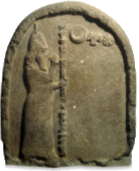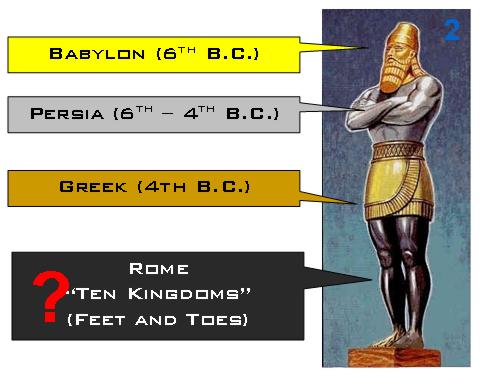The narrative of Daniel 2 may be understood as Five Moves:
The Kings Court
The kings bad dreams are more than psychological torment. In Babylon they do easily divide the world into secular and spiritual as we too often want to do.
 Ancient Astrology was commonplace in the Babylonian court. Magicians, enchanters, sorcerers, and Chaldeans would have been the kings advisors and counsel. They paid close attention to the spiritual world. The stone pictured is an image of a Babylonian astrologer taking note of heavenly objects such as the moon and sun.
This isnt just hocus-pocus or trickery. The astrologers are the scientists and advisors of the day and their craft utilizes mathematics and astronomy.
Ancient Astrology was commonplace in the Babylonian court. Magicians, enchanters, sorcerers, and Chaldeans would have been the kings advisors and counsel. They paid close attention to the spiritual world. The stone pictured is an image of a Babylonian astrologer taking note of heavenly objects such as the moon and sun.
This isnt just hocus-pocus or trickery. The astrologers are the scientists and advisors of the day and their craft utilizes mathematics and astronomy.
Ancient Wisdom: Daniel is being distinguished as a unique man of wisdom. He is the wisest of the wise men. The source of Daniels wisdom is God. Notice what he says in v. 2:27.
Like Joseph in Egypt, Daniel attains to a high position in the royal court through his God-given gift for reading the signs and showing wisdom.
I will show three very popular scenarios and then explain why deciding on one doesnt actually matter too much ...
In the first scenario, the head of gold equals Babylon (this is really never under dispute). The silver torso is the empire of the Medeans. The bronze waist is the empire of the Persians and the legs of iron is the Macedonian empire of Alexander the Great, including the feet mixed with clay which represent the divided Greek empire. (See next graphic.)

The major problem with this scenario is that there is no historical evidence that the Medeans were ever a separate empire from the Persians, at least not on this timeline.
The second scenario that is widely connected to the statue is as follows: Babylon is the head of gold, the Persians are the silver torso, the Greeks are the bronze waist, and the Roman Empire would be the iron legs. The iron-clay mix of the feet represent the division of the Holy Roman Empire into West and East. The ten toes are even regarded as ten nations that will form an empire in the latter times.

The major problem with this scheme is that the age of the Roman Empire is outside the historical scope of Daniel. Daniel is a Tale of Two Ages the 6th century and 2nd century B.C. Furthermore, equating the legs, feet, and toes with Rome and the ecclesiastical divisions that follow is an attempt to make Daniel fit with Revelation. This reads Revelation back into Daniel. Daniel does not make any distinction about the toes.
The third scenario does the best job of interpreting the iron legs and the mixed iron-clay feet. The head is Babylon, the torso is Persian, the bronze waist is Alexander the Greats Macedonian Empire. (This fits well with 2:39 which describes this empire as a large world empire). The iron legs and feet then are the warring empires of the Ptolemies and Seleucids. History notes that these empire did try to establish peace through intermarriage.

 Whichever scenario one deems best, the final message is the same: Gods eternal kingdom will break down and outlast any and every human kingdom. This is the meaning of the rock that crushes the statue.
Whichever scenario one deems best, the final message is the same: Gods eternal kingdom will break down and outlast any and every human kingdom. This is the meaning of the rock that crushes the statue.
So What?
 Link to next sermon
Link to next sermon
 Link to other sermons of Chris Benjamin
Link to other sermons of Chris Benjamin